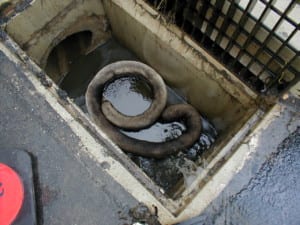The Environmental Protection Agency’s (EPA) stormwater program and state environmental protection agencies regulate rainwater runoff from construction, industrial, and municipal activities through implementation of permitting and compliance programs aimed at eliminating the discharge of pollutants into surface waters.
Stormwater runoff is generated from rain and snowmelt events that flow over land or impervious surfaces, such as paved streets, parking lots, and building rooftops, and does not soak into the ground. The runoff picks up potential pollutants such as trash, chemicals, oils, and dirt/sediment that can impact rivers, streams, lakes, and coastal waters.
Conformance with your state’s stormwater management permitting and compliance programs requires qualified scientific and engineering expertise. The professional hydrologists and engineers at EMS have been providing the following services for more than 25 years:
- Regulatory Compliance
- Interpretation of your state’s specific programs, requirements, orders, notices of violation, etc.
- Direct interface with your state’s representatives
- Assistance in negotiating permit limits, terms, and conditions
- Stormwater Characterization Studies
- Identify hydrologic drainage conditions within your property
- Inventory potential pollutant sources and pollutant-generating activities
- Develop stormwater sampling and laboratory sample analysis plans
- Document and assess existing traditional stormwater management practices
- Identify and implement best management practices (BMPs)
- Develop detailed mapping of drainage areas, facility boundaries, and operations
- Engineering Design/Development Support
- Traditional stormwater management and BMP plans for facilities/structures
- Erosion and sedimentation control plans for facilities/structures
- Contigency plans (SPCC, PPC, SPR, FRP)
- Emergency Planning and Community Right-to-Know (SARA Reporting)
- Field Services
- Storm tracking, sample scheduling, and sample collection
- Laboratory sample analysis coordination, sample management, data management
- Pre-arranged 24/7 availability for stormwater sample collection
- Regulatory Reporting
- Prepare letter responses and reports
- Complete your state’s permit application, modules, and forms
- Review and interpret analytical sample results
- Prepare and produce maps, drawings; technical support documentation
Stormwater Discharges from Construction Activities
The NPDES stormwater program requires permits for discharges from construction activities that disturb one or more acres, and discharges from smaller sites that are part of a larger common plan of development or sale. Construction stormwater permits include effluent limits for erosion and sediment control, pollution prevention, and site stabilization from the Construction and Development Effluent Guidelines and Standards regulations.
Stormwater Discharges from Industrial Activities
Federal regulations at 40 CFR 122.26(b)(14)(i)-(xi) require stormwater discharges associated with specific categories of industrial activity to be covered under NPDES permits (unless otherwise excluded). The eleven categories of regulated industrial activities are:
- Facilities subject to federal stormwater effluent discharge standards at 40 CFR Parts 405-471
- Heavy manufacturing (e.g., paper mills, chemical plants, petroleum refineries, steel mills and foundries)
- Coal and mineral mining and oil and gas exploration and processing
- Hazardous waste treatment, storage, and disposal facilities
- Landfills, land application sites, and open dumps with industrial wastes
- Metal scrap yards, salvage yards, automobile junkyards, and battery recyclers
- Steam electric power generating plants
- Transportation facilities that have vehicle maintenance, equipment cleaning, or airport deicing operations
- Treatment works treating domestic sewage with a design flow of one million gallons a day or more
- Construction sites that disturb five acres or more (permitted separately)
- Light manufacturing (e.g., food processing, printing and publishing, electronic and other electrical equipment manufacturing, public warehousing and storage)
Stormwater Discharges from Municipal Sources
Polluted stormwater runoff is commonly transported through municipal separate storm sewer systems (MS4s) and then often discharged–untreated–into local water bodies. An MS4 is a conveyance or system of conveyances that is:
- owned by a state, city, town, village, or other public entity that discharges to waters of the U.S.
- designed or used to collect or convey stormwater (e.g., storm drains, pipes, ditches)
- not a combined sewer
- not part of a sewage treatment plant, or publicly-owned treatment works (POTW).
To prevent harmful pollutants from being washed or dumped into specific types of MS4s, operators might be required to obtain NPDES permits and develop stormwater management programs (SWMPs).


